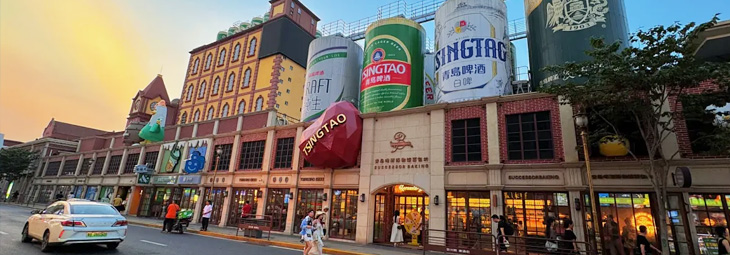Conference participants who bear a foreign passport may need to apply for a Chinese visa to visit China. Participants can apply for a visa at the Chinese embassy or consulate in the region where they live. To avoid any uncertainty, participants are advised to apply for the visa as early as possible, at least one month in advance.
For most attendees, it is easier to apply for a Tourist ("L") visa.
* For more information, please contact the local Chinese Embassy in your country.
The 240-hour visa-free transit is one of China’s visa exemption policies provided to eligible foreigners coming from selected countries.
Under the 240-hour visa-free transit policy, foreign travelers can enjoy a ten-day stay in certain Chinese cities without a visa, provided they come from 55 eligible countries, enter and exit China from eligible ports, stay within the allowed cities and regions, as well as satisfy other requirements.
The applicant must be a citizen of one of the following 55 countries that are eligible for the visa-free transit policy:
To know more details, please visit: https://en.nia.gov.cn/n147413/c183100/content.html
Qingdao (青岛), a coastal city in eastern China, is renowned for its unique blend of natural beauty and colonial architecture. Famous for its red-roofed buildings set against green trees, blue seas, and clear skies, it hosts the internationally celebrated Qingdao Beer Festival. Key attractions include the historic Eight Great Passes area with its diverse international architectural styles, Laoshan Mountain, and Zhanqiao Pier. As a major port and center for marine research and education, Qingdao seamlessly combines cultural heritage with modern vitality.
Here is the tourism route:
Badaguan Scenic Area(八大关) --- Tsingtao Beer Museum (青岛啤酒博物馆) --- Zhanqiao Pier (栈桥) --- Taidong Pedestrian Street (台东步行街)
Badaguan Scenic Area(八大关)
Badaguan is a renowned scenic area in Qingdao, famous for its tranquil streets and stunning architectural diversity. Its name comes from the eight roads named after ancient Chinese military passes. The area is a living museum of international architecture, featuring villas and gardens in over 20 different styles, including Russian, British, French, and German. Strolling through its quiet, winding paths provides a peaceful escape and a journey through a unique blend of history, culture, and natural beauty, making it a must-visit for photography and relaxation.

Figure 1: Badaguan Scenic Area(八大关)
Tsingtao Beer Museum (青岛啤酒博物馆)
Located at 56 Dengzhou Road within the historic brewery complex, the Tsingtao Beer Museum is China’s first beer-themed museum. It features two main exhibition areas: Historical Heritage and Production Process. Through rich historical materials and interactive technology, the museum vividly showcases Tsingtao Brewery’s journey since its founding in 1903 during the German colonial period. Blending history, technology, and gastronomy, the museum offers an immersive insight into Tsingtao’s beer culture and stands as a landmark of industrial tourism.

Figure 2: Tsingtao Beer Museum (青岛啤酒博物馆)
Zhanqiao Pier (栈桥)
Zhanqiao Pier is the iconic symbol of Qingdao, stretching 440 meters into the clear blue waters of Qingdao Bay. Built in 1891, it is the city's oldest pier. At its end stands the elegant Huilan Pavilion, a traditional Chinese octagonal pagoda that offers panoramic views of the city skyline and the sea. It is a perfect spot to appreciate Qingdao's harmonious blend of historical significance and natural coastal beauty.

Figure 3: Zhanqiao Pier (栈桥)
Taidong Pedestrian Street (台东步行街)
Taidong Pedestrian Street is the bustling commercial heart and a paradise for food lovers in Qingdao. It's the best place to experience the local life and indulge in Qingdao's famous street food, especially the fresh seafood barbecue. It offers a stark and exciting contrast to the city's historical sites, providing a truly authentic taste of modern Qingdao's culture and cuisine.

Figure 4: Taidong Pedestrian Street (台东步行街)

conference123 is an international academic communication platform, that facilitates high-level symposiums and fostering innovation. It serves as a platform for academic conferences, bringing together experts and scholars worldwide to exchange research findings.
Participation Guidelines
Contact Us
Email: contact@conference123.net
Cell Phone: 0086-18616502321
0086-18621626037
|
Address: |
11th Floor, Block B, Pinzun International Center, No. 567, Langao Road, Putuo District, Shanghai |

沪公网安备 31010702005022号